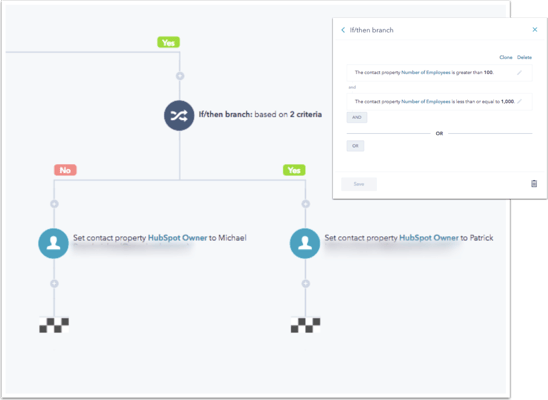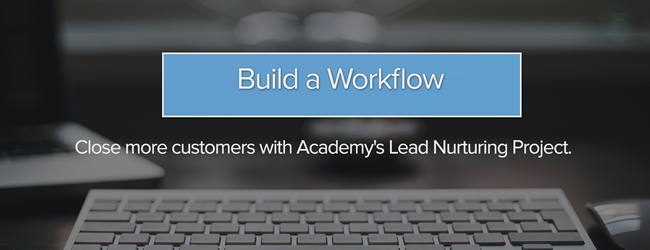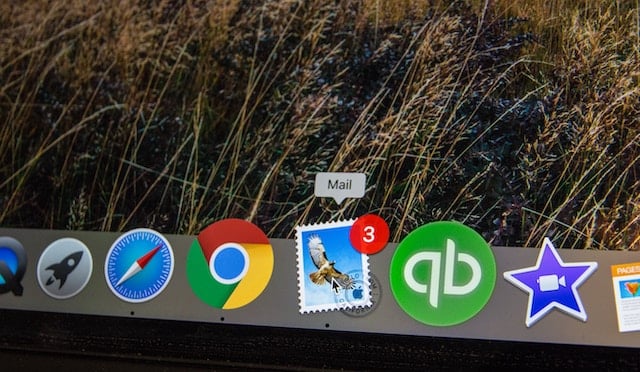HubSpot is the perfect tool for us. SoapBox is a startup company so everyone is always wearing multiple hats at the same time which means that even though I'm the admin for HubSpot, I'm also the admin for Salesforce, running campaigns, and creating content. HubSpot was easy enough for me to use, yet powerful enough for me to customize my workflows to help make a more efficient, automated process within our company.

Why Did Branching Logic Make My Life Easier?
Using branching logic in workflows allows me to create more efficient workflows. Instead of a 1:1 ratio of workflow to goal, I can have one workflow accomplish multiple goals. For example, I use branching logic to assign leads to our Sales Development Representatives (SDRs) based on territory.
Without branching logic in workflows, I would have to create a separate workflow to assign each lead for each SDR. With branching logic, I only need one workflow. At the same time, it allows me to choose different actions based on criteria. Without it, your only options are a specific set of actions if the criteria is true. Otherwise, there's no action unless you build another workflow.
How Do We Use Branching Logic in Workflows?
For me, creating branching workflows has two key steps:
- Identifying the goals
- Mapping out the criteria for branching territory assignment workflow
The first step is crucial because, with branching workflows, you can do a lot and it can be tempting to want to do it all in just one workflow.
By identifying the purpose of your workflow, it’ll help you manage all of your workflows. Using our Territory Assignment workflow as an example, I know that the goal is to:
- Assign a territory to each lead
- Assign that lead to a SDR based territory
- Send a follow-up email to the SDR
Next, I map out my criteria for each branch. Sometimes the criteria is simple, and sometimes it can be more complicated. The more complicated it is, especially if you have multiple branches in the workflow, the more valuable it is to actually draw out a map of your branching workflows so that you don’t get confused.
What Do Our Workflows Look Like?
It starts by adding anyone who's been qualified as a contact or lead from a form and whose company headquarters is known. This ensures that the leads are qualified and that we can actually assign them based on where the company is located.

The first branch asks if the headquarters belongs in the Midwest territory. The Midwest territory is a list within HubSpot. I could have just added the states in the territory as a part of criteria, but having lists for each territory allows me to use the same criteria in multiple workflows and also ensures that if the states in the territory change, I only have to change specific lists for the changes to apply to everything else I use it for.
If the lead's company headquarters is not based in the Midwest territory, it flows to "No" branch and onto the next territory branching criteria. The branches continue until the lead is assigned or hits the end of the workflow. If the lead still hasn't been assigned, I've added an internal email at the end that gets sent to me to double check if the workflow is broken or if their company headquarters is actually based in the USA or not.

If the lead is in the Midwest territory, the workflow follows the "Yes" branch where it gets assigned to the SDR responsible for that territory and they are notified that the lead has been assigned to them via an internal email.

What creative ways do you use workflows to create efficiencies within your business? Tell us in the comments field below.






![Plannuh Builds Product With the Customer at the Forefront [Customer Story]](https://53.fs1.hubspotusercontent-na1.net/hubfs/53/IMG_0128-3.jpg)
![How One HubSpot Customer Uses Pop-Up Forms and Workflows to More Intelligently Help Customers [Customer Story]](https://53.fs1.hubspotusercontent-na1.net/hubfs/53/inbound-lorax-ff7a59-light.jpg)


![How TurboTenant Makes Property Management Easy With HubSpot [Customer Story]](https://53.fs1.hubspotusercontent-na1.net/hubfs/53/unique-balcony-architecture.jpg)